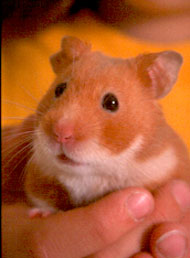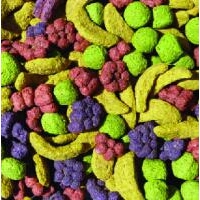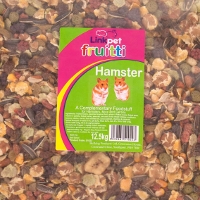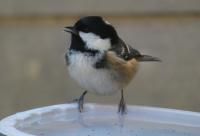- Home
- Special Offers
- New Products
- FAQs
- Customer Video Gallery
- Customer Photo Gallery
- Bird Facts
- Bird Food Blog
- Bird Information
- Feeding Advice
- Small Animal Information
- A to Z of Guinea Pigs
- A to Z of Hamsters
- A to Z of Rabbits
- Basic Care for Guinea Pigs
- Basic Care for Hamsters
- Basic Care for Rabbits
- Basic care for Chinchillas
- Basic care for Ferrets
- Basic care for Gerbils
- Basic care for Mice
- Basic care for Rats
- Buying a Healthy Small Animal
- Does your Reptile need a Licence
- Equipment for Ferrets
- Equipment for Hamsters
- Equipment for Mice
- Equipment for your Chinchilla
- Equipment for your Gerbil
- Equipment for your Guinea Pig
- Equipment for your Rabbit
- Keeping a House Rabbit
- Dog Information
- Cat Information
- Customer Information
- Bird Food
- Small Animals Food
- Pond Fish Food
- Dog Food
- Cat Food
- My Account
| Tweet |

|
Basic Care for Hamsters

Easy to look after and entertaining to observe when they come out to play in the evening, hamsters are popular pets – and inveterate hoarders!
Housing and bedding
Hamsters, particularly the common Syrian (golden) hamster, are antisocial rodents who prefer to live in solitude, so house them individually. Some species, such as Russian Dwarfs, are less aggressive and may be successfully kept in groups of two females.
There are many types of cages available to buy, but your best bet is to purchase the biggest one your budget allows as hamsters require lots of exercise in order to remain fit and healthy. As hamsters enjoy burrowing into their bedding it is advisable to choose a cage that has a deep base; it’s preferable that the bedding remains in the cage as opposed to falling out on to the floor! Aquariums (fish tanks) make ideal hamster homes as they allow a deep layer of bedding to be provided.
Untreated softwood shavings or clean shredded paper make good hamster bedding material, ideally on top of a base layer of peat. In addition to this you should supply a nesting material such as clean, sweet-smelling hay or one of the products specifically manufactured for small rodents (hamsters are rather partial to cotton wool). Avoid straw as this may cause eye injuries due to it being quite coarse and prickly.
As a general rule, hamsters are clean animals and will use one area of their cage as their toilet, which is handy when it comes to cleaning-out time. One useful tip is to place a small, clean glass jar on its side in his cage for your pet to use as his own personal ‘hamsterloo’ simply empty and wash out the jar daily.
Wet and soiled bedding should be removed daily with the remainder cleared out weekly and the cage base washed with a water-diluted solution of pet disinfectant.
Hamsters are susceptible to cold temperatures and can go into a state of hibernation if they are not warm enough, so maintain an environmental temperature of around 20C. If hibernation occurs, gently warm your hamster in your hands to awaken him.
High temperatures and low humidity do not agree with hamsters either, so in hot, dry weather leave a window open in your pet’s room (or, if this isn’t practical for security reasons, put him in a cooler one) and place a bowl of water near his cage.
Never put small animal cages in direct sunlight, e.g. on a windowsill, as your pet could overheat.
Tip: After cleaning out the cage, replace a small amount of your hamster’s old nesting material to help him familiarise with his home.
Tip: Do not shred newspapers for small animal bedding; the inks they contain may prove poisonous.
Grooming
Exceptionally clean animals where their personal appearance is concerned, short-haired hamsters do not usually require grooming. Those with longer hair will benefit from regular, gentle brushing with a soft toothbrush.
Feeding
Hamsters have large cheekpouches in which they collect food to take back to their storage area; in fact their name derives from the German word ‘hamstern’, which means ‘to hoard’.
As hamsters are inveterate food hoarders, saving their spoils for a rainy day, it is important to ensure that you don’t overfeed your pet as this will result in stored food beginning to decay. Provide your ‘cheeky’ pal with approximately one to two teaspoons of a dry hamster mix per day – you’ll soon be able to judge how much yours eats in one day and adjust the amount accordingly. As hamsters like to sit in their feeding bowl, use a gnaw-proof one that is difficult to tip over.
Small amounts of fresh fruit and vegetables should be given as a treat by hand so you can ensure that they are eaten and are not spirited away to rot in a corner instead!
Clean, fresh water should be available at all times and a gravity water bottle is the best method of supplying it. Place food and water containers well away from your hamster’s toilet area to avoid contamination.
Twootz provides Hamster food and Small Animal fruity mix which are both ideal for your Hamsters well being.
Tip: Avoid feeding your hamster too many sunflower seeds and peanuts as treats. These are high in fat and excessive amounts could cause obesity.
Exercise
Hamsters need daily exercise in order to remain fit, happy and healthy, so you must provide your pet with the means to exert himself when required. A fixed wheel inside the cage is the most efficient way of providing your hamster with a personal mini-gym; hamsters love to play on wheels – if they didn’t they wouldn’t use them. In satisfying his need for speed, a super-fit hamster can clock up to eight miles per day on his wheel!
An exercise ball is another toy that your hamster may enjoy playing with. Simply place it on the floor, pop your hamster inside it and away he will go, racing around to his heart’s content. However you must always supervise proceedings and never allow the ball to be used near stairs or on tables, worktops, etc in case of falls. Do not leave your hamster in his ball for more than 15 minutes otherwise he may exhaust himself.
Placing cardboard tubes and boxes on the cage floor and hanging treats on string in your hamster’s cage also provides suitable equipment for physical exercise and mental stimulation, plus chewing both cardboard and treats will help maintain his teeth in good condition. As hamsters are notorious nibblers, make sure yours is supervised if you allow him out of his cage otherwise he will more than likely make a meal out house furnishings and furniture. Electric cables seem to be especially tempting to roving rodents!
Tip: Choose an exercise wheel of solid design, ie without slatted runs, to prevent your hamster’s legs becoming trapped in gaps.
Health
Correctly cared for, hamsters are generally healthy little creatures and rarely suffer serious ailments. Learn to recognise what daily activity, appetite and behaviour is normal for your pet so that any signs of distress or ill-health will be instantly apparent to you. Get into the habit of checking your hamster every day for illness or injury and handle him gently to avoid stress as this is damaging to both his mental and physical health.
Hamsters’ teeth grow continuously and are normally worn down by chewing, but some may suffer from overgrown teeth that cause inefficient food mastication. If this happens, consult your vet. Providing mineral stones and wood gnaws will help maintain your hamster’s dental health.
Wet tail is a condition that hamsters are particularly susceptible to and is characterised by severe diarrhoea that warrants urgent veterinary attention. Unnecessary handling, a dirty cage or an unsuitable diet (such as rotting food or too much fat) are major causes of wet tail.
Tip: Hamsters can catch respiratory viruses, such as colds, from humans and these can progress to fatal pneumonia, so it is wise not to let a cold-sufferer handle your pet.
Tip: Fresh deciduous logs (e.g. from fruit trees and pussy-willow) make good gnawing material for hamsters and other rodents to help maintain their teeth in tiptop order.











